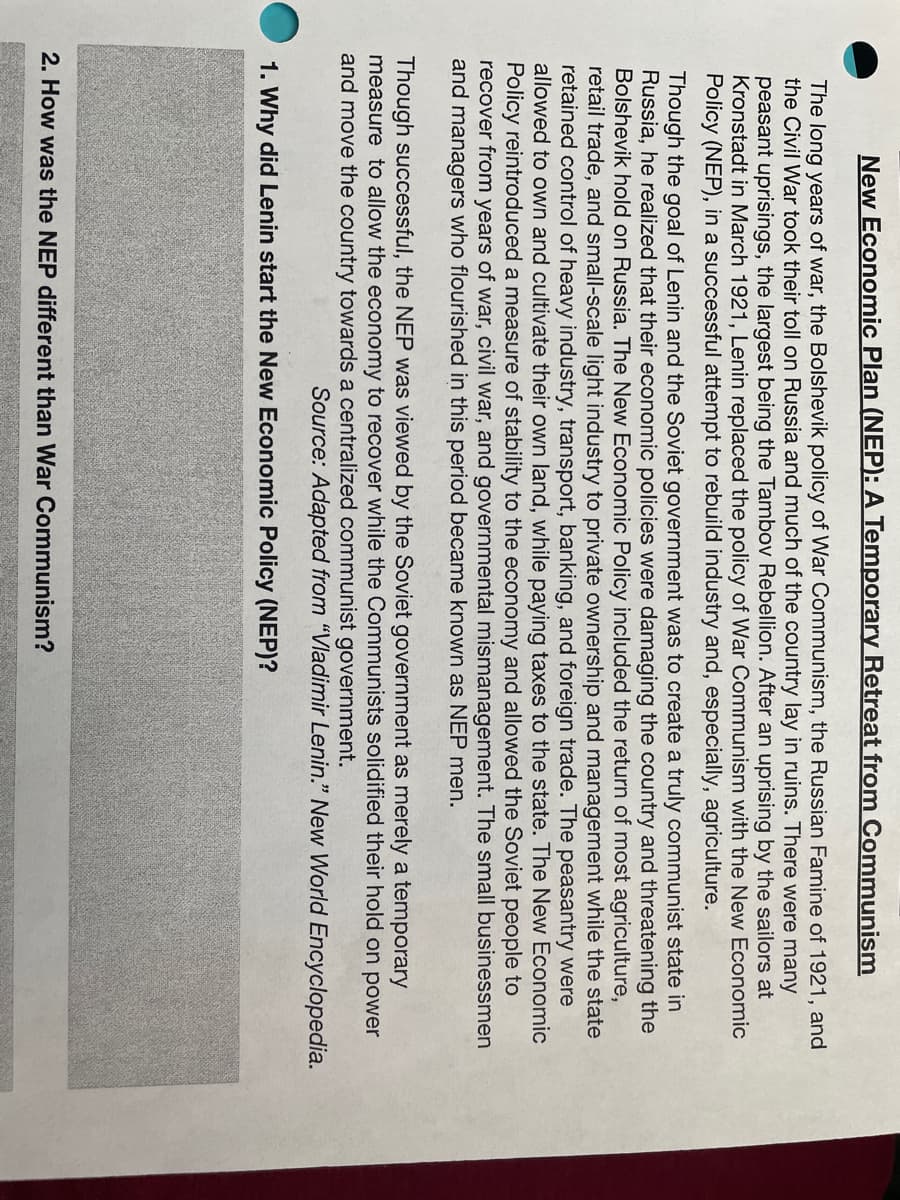2. How was the NEP different than War Communism?

The economic system that prevailed in Russia from 1918 to 1921 was known as war communism (civil war). Lenin introduced War Communism to overcome the economic challenges caused by the Russian Civil War.
War communism is a soviet-run military economy. At the time nations, including France, Germany, the United Kingdom, the United States, and Japan, were essentially besieging and even invading the new red Russia, all scrambling to get their hands on whatever spoils they could.
It was critical to properly organize and mobilize the meagre remaining resources (food, ordnance, trains, labour, etc.). After four years of horrible war, a country that has already been emptied economically and demographically, add to that the structural ruin of agricultural productivity in a country that was predominantly semi-feudal/agrarian.
The enormous famines of winter 1920-1921 occur because peasants are unable to tend the fields because they are either dead, fighting, or fleeing. Similarly to how "total war" evolved as a necessity of WW1, "War Communism" evolved as a survival strategy against utter annihilation, both economically (managing scarcity) and humanly (restoring territorial/political/demographic unity shattered by WW1).
The Bolsheviks generated "economic instability" by aiming to "deprive the landed classes of their influence," as they wanted to impose set pricing on grain and supplies, as well as stringent controls on rural life.
The Bolsheviks even ordered "military food detachments" to "requisition surplus grain supplies from peasants" in order to stabilise the Soviet society's resource crisis.
Bolshevik authorities charged these brigades with eradicating 'privileged' characteristics of Soviet society under the pretence of establishing social and economic equality for the masses.
Disparities between rich and poor peasants, on the other hand, were largely unimportant, as peasants of all socioeconomic groups were all too regularly caught in the crosshairs of these overconfident cadres.
Both prosperous and destitute peasants suffered greatly as a result of War Communism's economic policies.
Trending now
This is a popular solution!
Step by step
Solved in 2 steps









